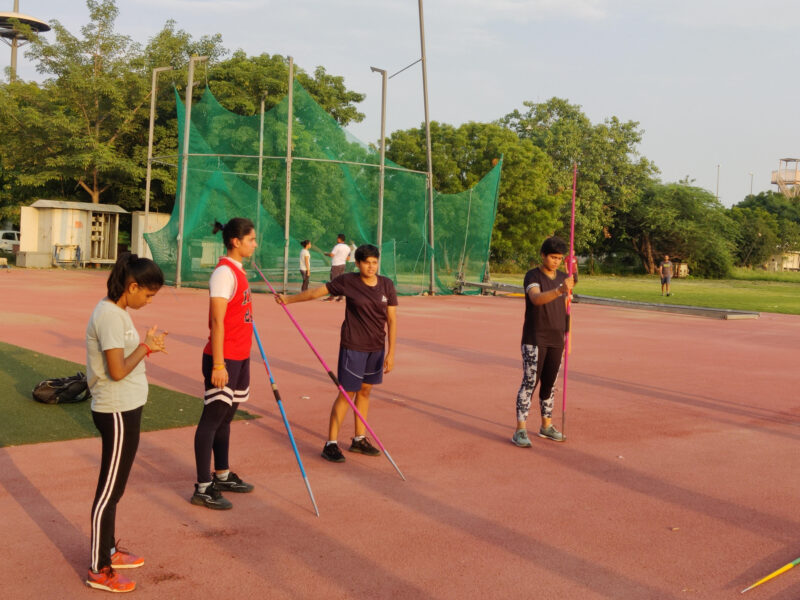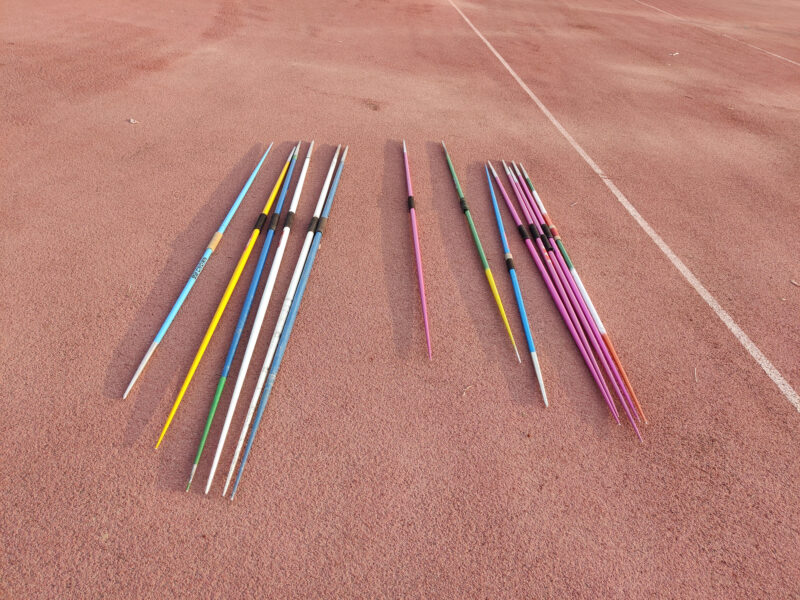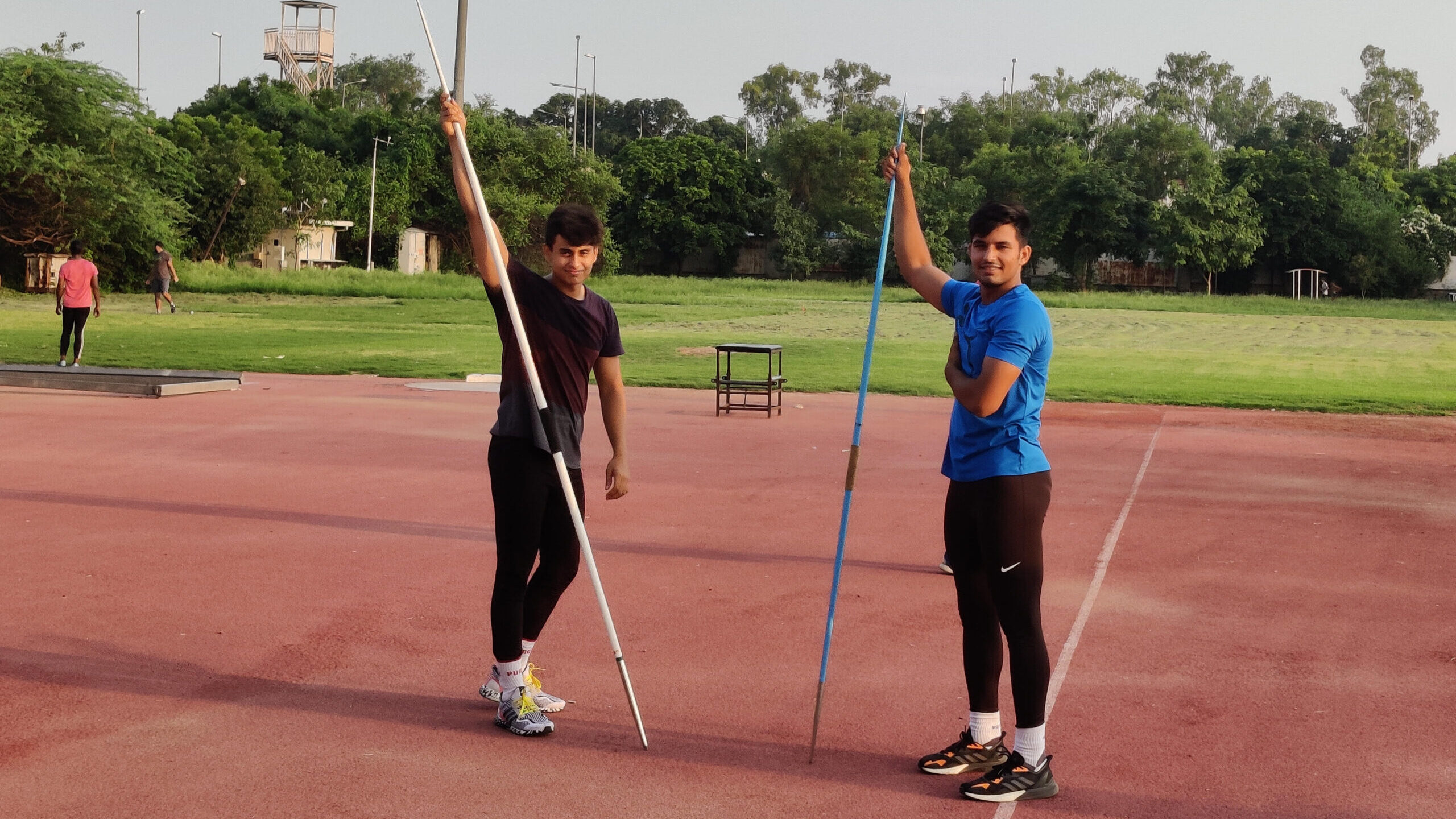Last October, when India won its first-ever gold medal in Olympic athletics – thanks to javelin thrower Neeraj Chopra – Lakshay Singh firmed up his decision to become a javelin thrower and gradually leave discus for good.
Besides his athletic ambitions, the 18-year-old was also preparing for JEE (Joint Entrance Exam) for engineering and had developed an interest in the javelin discipline a month or two before Chopra’s feat. Following the historic gold medal win, he began training devotedly for javelin by October-end.
Since then, the resident of Delhi’s Naraina has taken big strides, winning gold in the under-20 category of Open Delhi State Athletics Championships in February and silver in Delhi State Athletics Championships in May.
Like Lakshay, Neeraj Chopra’s gold medal inspires many budding athletes to take up javelin. India’s international javelin thrower Vipin Kasana, who had finished fifth in the 2018 Commonwealth Games behind gold medal winner Chopra and now coaches at the Jawaharlal Nehru Stadium, says, “Almost every day, we get 2-3 trainees who want to take up javelin. We have to turn back many who aren’t suitable. It requires a lot of strength and a different set of skills. Before Chopra’s feat, there was no demand for javelin.”
While sprinting, running and jumps are the most important and preferred disciplines, javelin is gaining more popularity now.
Nirbhay Singh, Lakshay’s father and a hammer throw coach at Nehru Stadium, says, “Who wouldn’t get inspired by an Olympic gold-medallist? It isn’t just Lakshay. Nowadays, most athletes who come to learn throws events (hammer, javelin and shot put), come for javelin. Out of every 10 kids wanting to learn throws, as many as eight want to learn javelin.”

He adds that one needs natural talent and ability in javelin throw such as explosive power and a jerk at throw. According to Nirbhay, at the Nehru stadium, there used to be 10-12 trainees in javelin before Chopra’s gold. “Now, there are 40-45”, he says.
Sunita Rai, who is an athletics coach at the Capital’s Chhatrasal Stadium, says that now, she often tells her runners to take up throws including javelin.
“There are sprinters (short distance runners in 100m and 200m) who I advise to take up throws – like if someone has a good jerk and explosive power while throwing javelin”, Sunita says.
Sprint disciplines are among the weakest facets of India’s athletics. The sprinters generally find it difficult to compete even at the Asian level.
India’s strength begins in middle and long distance and there have also been international successes in throws and jumps.
“Javelin was popular in Haryana, but it is gaining a following in Delhi too”, adds Sunita, who has also seen an increase in the number of javelin aspirants. She said there are about 25-30 trainees now from 8-10 before Chopra’s success. Presently, Chhatrasal is under renovation and the javelin throwers have moved to other venues temporarily.
However, despite the rising interest, the standards of the game remain subpar. Winning medals, even at the national level, are beyond Delhi’s reach for now.
G Krishnan, who is part of the technical team at Delhi Athletics, said that while an 80m throw or thereabouts is the new standard at the national level, the best of Delhi are struggling around 70m.
“We had the Federation Cup and the Inter-State Athletics meets in Calicut and Chennai, and Delhi’s performance wasn’t impressive. Delhi’s best javelin athletes reach early to mid-70s”, said Krishnan.
Abhishek Drall, who represented Delhi in both events, came up with a 78.43m throw at Inter-State in June to finish fourth, after an ordinary performance in Federation Cup in April where he finished eighth with a 71m throw. He was over 10m short in the Federation Cup and six metres short at the Inter-State meet from the gold-medallist.
Drall had been in the national camp earlier, but since he came to Kasana, there has been improvement.
“The junior national championships to be held in November will be crucial. We will see how much potential young javelin throwers from Delhi have. Despite the growing interest, I don’t see much exceptional talent at the moment”, added Krishnan.
Currently, there is no one from the javelin category in the TOPS (Target Olympic Podium) scheme from Delhi. Para Asian Games gold-medallist Neeraj Yadav, who competes in Para javelin, was recently included in the TOPS scheme.
But Nirbhay says that there are 17-18 year-olds who have taken up javelin and are showing potential. “You will see them perform well in another 2-3 years”, he said.
Presently, Delhi’s best young talent, such as Lakshay, are way off the 80m mark. The throw that won Lakshay gold this year at Open Delhi State Athletics was 53.53m, while the one that won him silver at the Delhi State Athletics was around 55m. The gold medal winner threw at 56m.
As an 18-year-old, he is still competing in the under-20 category, but going forward, he hopes to improve.
Kasana said that things can’t improve much in Delhi’s javelin scene unless the authorities invest in coaching and facilities.

“Quality of coaches is key. We don’t have enough qualified coaches. Since javelin has become an important discipline and a potential medal-winning one, the Delhi government should invest in academies specializing in javelin and announce vacancies for coaches”, said Kasana.
He says that seeing the growing interest, it is time javelin gets priority status so that the standard of competitors from Delhi can rise.
Unlike other disciplines in athletics that involve running and jumps, those related to throws require relatively more expensive equipment and a separate place where the risk of hurting others is minimal.
While there are a few government stadia and academies where trainees can learn the sport, the real issue is the price and availability of javelin.
The high-quality javelin can cost up to Rs 1-1.5 lakh, which is unaffordable for many aspirants. The low-end one, which is meant for training and made of aluminum, can cost around Rs 5,500.
“Javelins of high range and top quality aren’t available in India”, said Nirbhay. “It is only when you become a national medallist and get into, say a junior national camp, you get a high-quality javelin. Practicing with it gives you an added advantage”, he says.
For more stories that cover the ongoings of Delhi NCR, follow us on:
Instagram: instagram.com/thepatriot_in/
Twitter: twitter.com/Patriot_Delhi
Facebook: facebook.com/Thepatriotnewsindia





